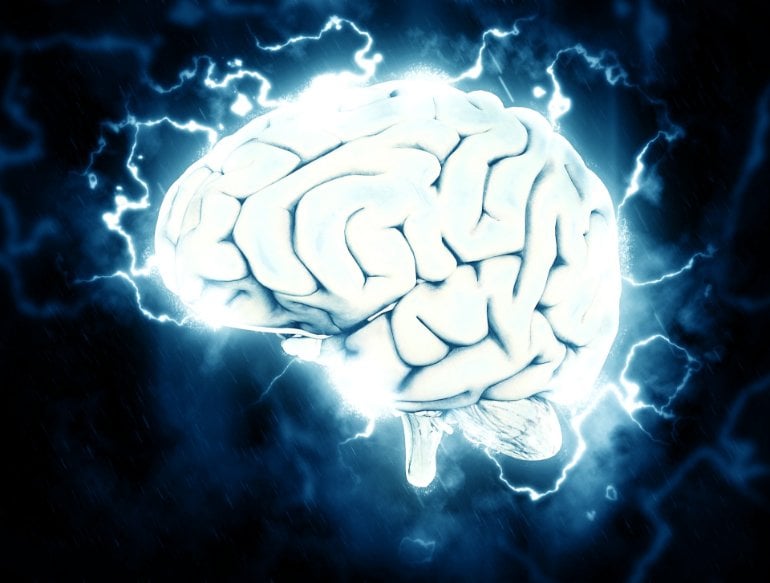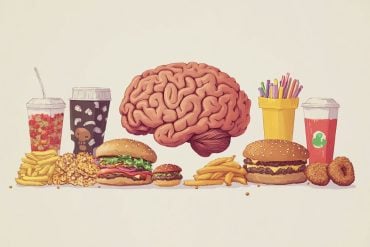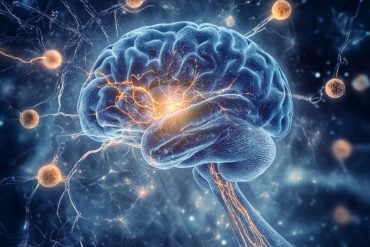Summary: Treatment with LAU-0901, a synthetic molecule that blocks pro-inflammatory platelet-activating factor, in addition to aspirin-triggered NPD1, reduced the size of damage areas in the brain, initiated repair mechanisms, and improved behavioral recovery following ischemic stroke.
Source: LSU
Research conducted at LSU Health New Orleans Neuroscience Center of Excellence reports that a combination of an LSU Health-patented drug and selected DHA derivatives is more effective in protecting brain cells and increasing recovery after stroke than a single drug.
The findings are published in Brain Circulation.
Nicolas Bazan, MD, PhD, Boyd Professor, Professor of Neurology and Director of the Neuroscience Center of Excellence at LSU Health New Orleans School of Medicine, and Ludmila Belayev, MD, LSU Health New Orleans Professor of Neuroscience, Neurology, and Neurosurgery, discovered this novel therapeutic strategy for ischemic stroke using an experimental model.
During an ischemic stroke, signals are produced from arriving blood white cells and primary brain immune cells called microglia that cause neuroinflammation leading to a buildup of chemicals that harm the brain. Platelet-activating factor (PAF) accumulates, and inhibition of this process plays a critical role in neuronal survival.
Dr. Bazan’s earlier studies also showed that in addition to its anti-inflammatory properties, DHA, an essential omega-3 fatty acid, stimulates the production of Neuroprotectin D1 (NPD1), a molecule that protects brain cells and promotes their survival. One complicating factor in developing neuroprotective strategies for stroke are the multiple routes and events that occur in the brain during a stroke, which has been approached mainly by monotherapeutic agents that were mostly unsuccessful.
Because no single therapy has proven effective in treating the complexity of stroke, the team aimed at two different events – blocking pro-inflammatory platelet-activating factor receptors (PAF-R) and activating cell-survival pathways. They found that treatment with LAU-0901, a synthetic molecule discovered in the Bazan lab that blocks pro-inflammatory platelet-activating factor, plus aspirin-triggered NPD1 (AT-NPD1) reduced the size of the damaged area in the brain, initiated repair mechanisms, and remarkably improved behavioral recovery.
Total lesion volumes were reduced with LAU?0901 plus NPD1 by 62% and LAU?0901 plus AT?NPD1 by 90%. Combinatory treatment with LAU?0901 plus AT?NPD1 improved the behavioral score up to 54% on day three. LAU?0901 and LAU?0901 plus DHA decreased the production of 12?hydroxyeicosatetraenoic acid, a pro?inflammatory mediator.
“The biological activity of LAU-0901 and AT-NPD1 is due to specific activation or modulation of signaling pathways associated with the immune system, inflammation, cell survival, and cell-cell interactions,” notes Dr. Bazan. “These findings provide a major conceptual advance of broad therapeutic relevance for cell survival, brain function and, particularly, stroke and neurodegenerative diseases.”
“We discovered that these novel molecules promote neuronal cell survival with important anti-inflammatory activity,” explains Dr. Belayev. “This combinatorial therapy may hold promise for future therapeutic development against ischemic stroke.”

According to the Centers for Disease Control and Prevention, someone in the United States has a stroke every 40 seconds. Every 4 minutes, someone dies of stroke. Every year, more than 795,000 people in the United States have a stroke. About 87% of all strokes are ischemic strokes, in which blood flow to the brain is blocked. Stroke-related costs in the United States came to nearly $46 billion between 2014 and 2015. This total includes the cost of health care services, medicines to treat stroke, and missed days of work. Stroke is a leading cause of serious long-term disability. Stroke reduces mobility in more than half of stroke survivors age 65 and over.
Other LSU Health authors include Drs. Pranab K. Mukherjee, Eric J. Knott and Reinaldo B. Oria, along with Larissa Khoutorova and graduate students Madigan M. Reid and Cassia R. Roque. Dr. Andre Obenaus, Lawrence Nguyen, and Jeong Bin Lee from the University of California Irvine School of Medicine, and Dr. Nicos A. Petasis of the University of Southern California, are also co-authors.
Funding: This research was supported by grants from the National Institute of Neurological Disorders and Stroke of the National Institutes of Health and Brazilian CAPES.
About this stroke research news
Source: LSU
Contact: Leslie Capo – LSU
Image: The image is in the public domain
Original Research: Closed access.
“Blocking pro-inflammatory platelet-activating factor receptors and activating cell survival pathways: A novel therapeutic strategy in experimental ischemic stroke” by Nicolas Bazan et al. Brain Circulation
Abstract
Blocking pro-inflammatory platelet-activating factor receptors and activating cell survival pathways: A novel therapeutic strategy in experimental ischemic stroke
OBJECTIVE: Acute ischemic stroke triggers complex neurovascular, neuroinflammatory, and synaptic alterations. This study explores whether blocking pro-inflammatory platelet-activating factor receptor (PAF-R) plus selected docosanoids after middle cerebral artery occlusion (MCAo) would lead to neurological recovery. The following small molecules were investigated: (a) LAU-0901, a PAF-R antagonist that blocks pro-inflammatory signaling; and (b) derivatives of docosahexaenoic acid (DHA), neuroprotectin D1 (NPD1), and aspirin-triggered NPD1 (AT-NPD1), which activates cell survival pathways and are exert potent anti-inflammatory activity in the brain.
MATERIALS AND METHODS: Sprague-Dawley rats received 2 h MCAo and LAU-0901 (30 or 60 mg/kg, 2 h after stroke), NPD1, and AT-NPD1 (333 μg/kg), DHA (5 mg/kg), and their combination were administered intravenous at 3 h after stroke. Behavior testing and ex vivomagnetic resonance imaging were conducted on day 3 or 14 to assess lesion characteristics and lipidomic analysis on day 1. Series 1 (LAU-0901 + NPD1, 14d), Series 2 (LAU-0901 + AT-NPD1, 3d), and Series 3 (LAU-0901 + DHA, 1d).
RESULTS: All combinatory groups improved behavior compared to NPD1, AT-NPD1, or DHA treatments alone. Total lesion volumes were reduced with LAU-0901 + NPD1 by 62% and LAU-0901 + AT-NPD1 by 90% treatments versus vehicle groups. LAU-0901 and LAU-0901 + DHA increased the production of vasoactive lipid mediators (prostaglandins: PGE2, PGF2-α, 6-keto-PGF1-α, and PGD2) as well an inflammatory regulating mediator hydroxyoctadecadienoic acid. In contrast, LAU-0901 and LAU-0901 + DHA decreased the production of 12-hydroxyeicosatetraenoic acid, a pro-inflammatory mediator.
CONCLUSION: Combination therapy with LAU-0901 and selected docosanoids is more effective than the single therapy, affording synergistic neuroprotection, with restored pro-homeostatic lipid mediators and improved neurological recovery. Altogether, our findings support the combinatory therapy as the basis for future therapeutics for ischemic stroke.






